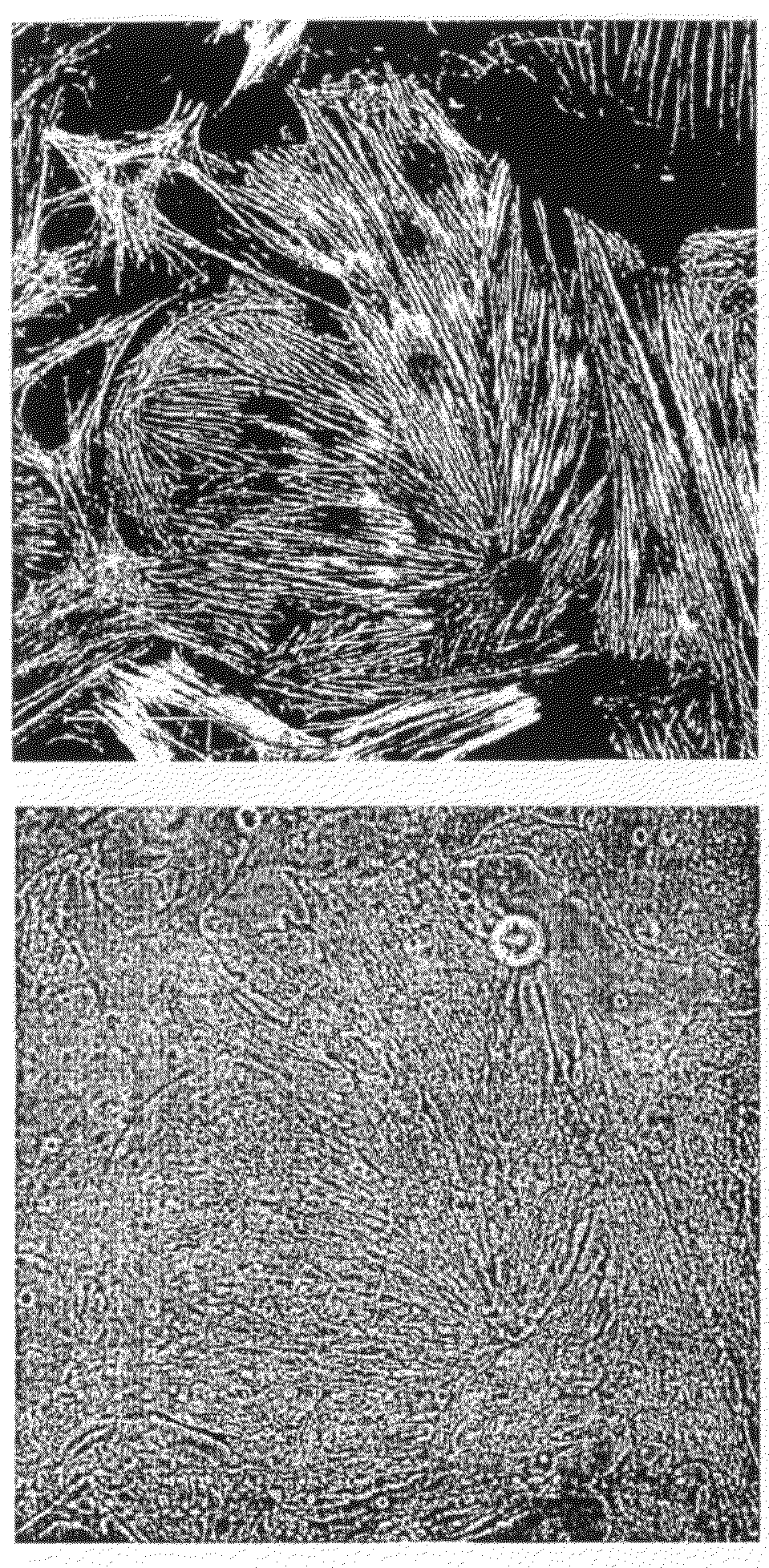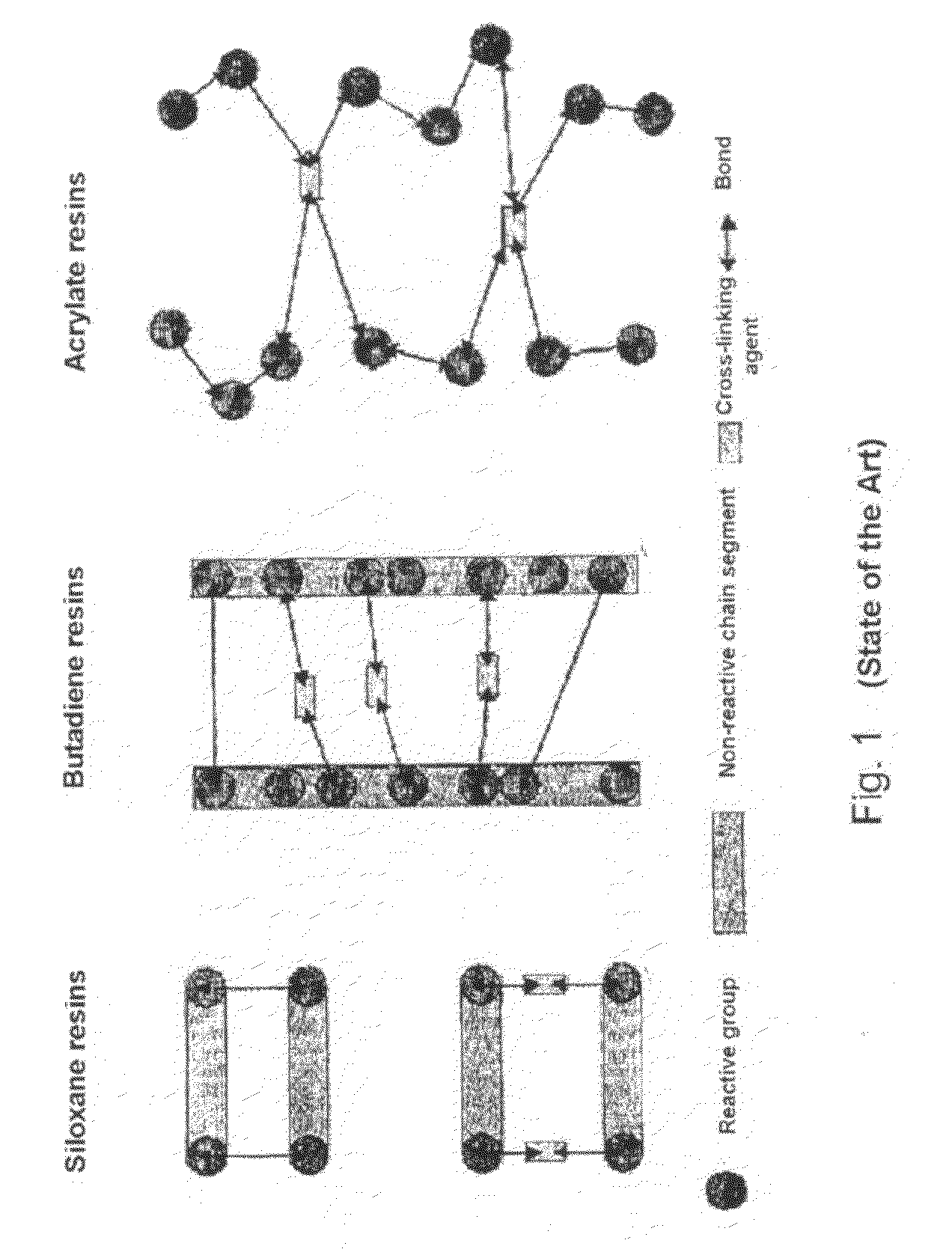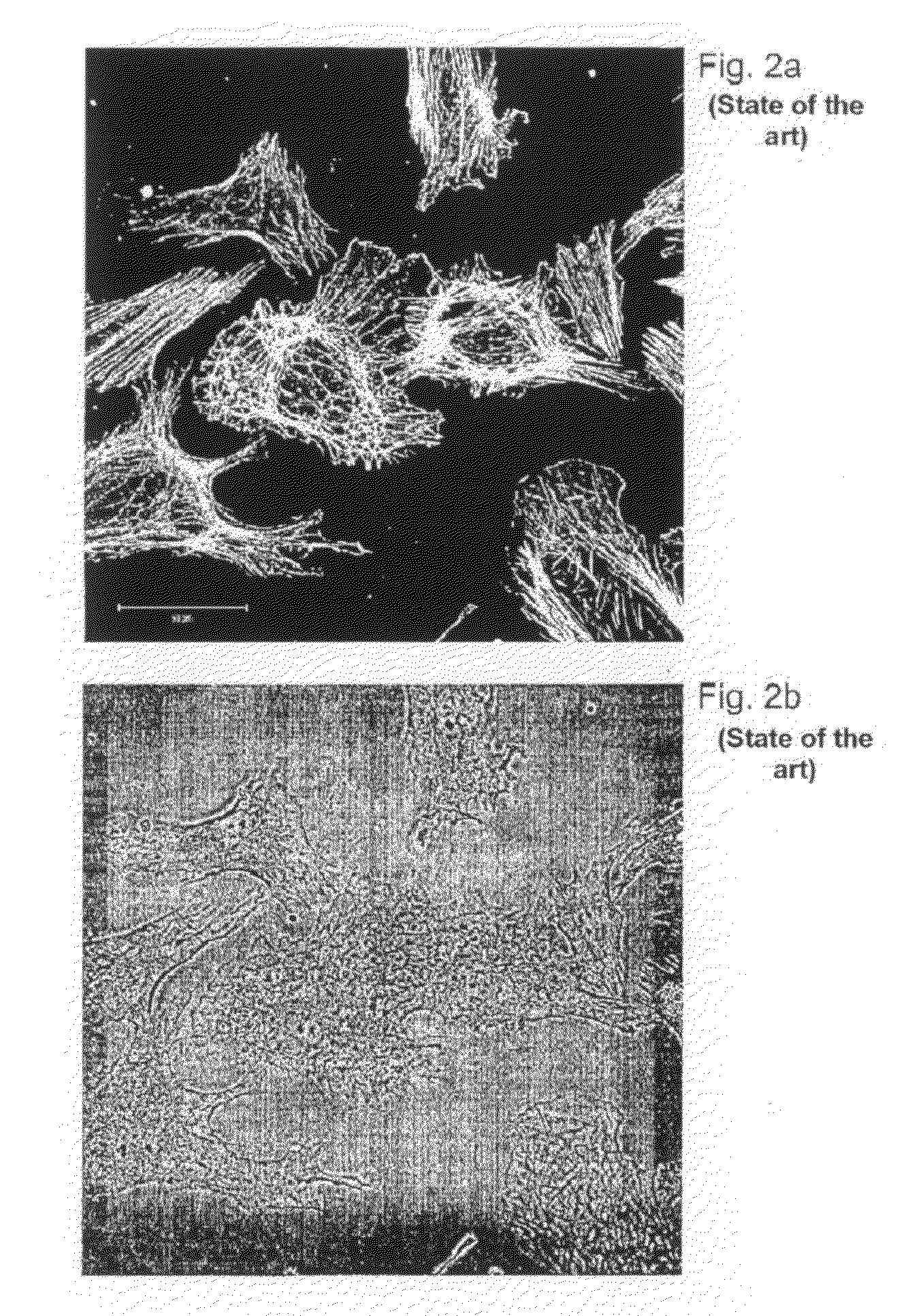Cell culture apparatus, method for producing the apparatus and cell culture method
- Summary
- Abstract
- Description
- Claims
- Application Information
AI Technical Summary
Benefits of technology
Problems solved by technology
Method used
Image
Examples
Embodiment Construction
[0142]FIG. 1 schematically shows the cross-linking types of three kinds of resins, which can be used according to the invention as the unstructured substrate for cells (state of the art).
[0143]For the arrangement according to FIG. 3, fibroblasts were isolated and plated out onto a PDMS surface, made from a Sylgard-184 kit, at a concentration of approximately 5000 cells per cm2.
[0144]The kit comprises vinyl-terminated siloxane as the base substance, a methylhydrosiloxane-dimethylsiloxane as the copolymer and an admixed Pt catalyst.
[0145]The mixture comprising siloxane and copolymer was prepared at a mixing ratio of 50:1 of base substance to cross-linking agent, mixed, and degassed in a desiccator.
[0146]A cover slip measuring 25×75 mm and having a thickness of approximately 100 μm was mounted on the rotary table of a Delta 10T type spin coater, from Süss Microtech, and coated with 3 ml of PDMS, which was not yet cross-linked. Spinning was performed for 30 seconds at 1000 revolutions p...
PUM
 Login to View More
Login to View More Abstract
Description
Claims
Application Information
 Login to View More
Login to View More - R&D
- Intellectual Property
- Life Sciences
- Materials
- Tech Scout
- Unparalleled Data Quality
- Higher Quality Content
- 60% Fewer Hallucinations
Browse by: Latest US Patents, China's latest patents, Technical Efficacy Thesaurus, Application Domain, Technology Topic, Popular Technical Reports.
© 2025 PatSnap. All rights reserved.Legal|Privacy policy|Modern Slavery Act Transparency Statement|Sitemap|About US| Contact US: help@patsnap.com



